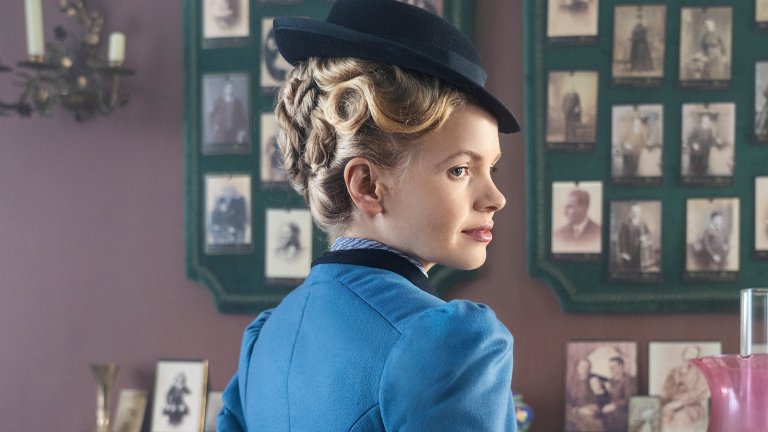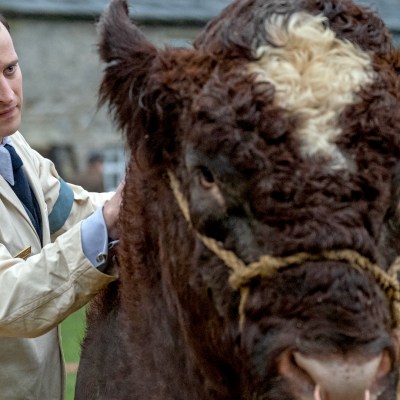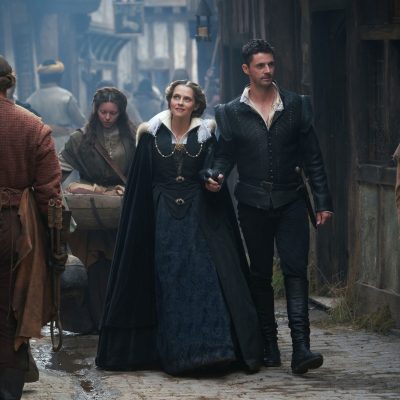Miss Scarlet and The Duke Review (Spoiler-Free)
Miss Scarlet and the Duke tackles some of the worst crimes in Victorian London, and the patriarchy too.

Masterpiece Mystery’s latest offering, Miss Scarlet and the Duke, gives viewers a taste of the darker side of Victorian London and a bold woman detective to root for. The show produced by A+E International along with Alibi UK became a cult hit last summer in the UK. Once fans get past the elements that break with the period mystery tradition, they will be rewarded with compelling mysteries and plots that challenge gender norms.
Eliza Scarlet (Kate Phillips from The Alienist) is the daughter of a retired officer and private detective. Her father (Kevin Doyle) taught her many of his professional tricks but forbade her to become a detective because it wasn’t considered safe or “ladylike”. His death encourages Eliza to become a full-time private detective. Kate’s transition to full time detective work is a rough one, as her contact at Scotland Yard, Chief Inspector William Wellington (Stuart Martin from Jamestown), doesn’t believe that the profession is a safe one for women, especially a woman who happens to be his childhood friend. He is “the Duke” referred to in the title, which is a nickname referring to the famous Duke of Wellington.
London as depicted in the series is filled with bars, prostitution dens, and thieves, showing the massive divide between the “haves” and the “have nots.” The cinematography and set design recreate the often squalid conditions at the time without relying entirely on artificially created darkness filters. Eliza’s bright blue walking suit is her answer to the navy police uniform: she’s on the side of ensuring the guilty go to prison but she is also a woman in a field entirely dominated by men.
Eliza’s first case is a missing persons inquiry, and her second case is a murder. She’s willing to go to the seedier sections of town to find out information, rule out suspects and even confront dangerous situations head on. Established fans of UK mysteries aired on Masterpiece will quickly get the sense that Miss Scarlet and the Duke’s version of Victorian London is much closer to modern crime procedurals with heightened violence and organized crime than to many of the previous period mysteries.
UK mysteries exploring the darker side of humanity are already popular on other networks and streaming channels, but this is Masterpiece Mystery’s rare chance to capitalize on the darker mystery subgenre while staying in line with FCC content rating restrictions. Miss Scarlet and The Duke is aiming to appeal to the same Anglophone and Anglophile mystery fans who loved Miss Fisher’s Mysteries, Frankie Drake Mysteries and Vienna Blood. Although all three series aired on PBS stations, their license is part of the American Public Television system and not part of the Masterpiece Mystery! branding. Eliza Scarlet is fighting crime 50 years earlier than Phryne Fisher and Frankie Drake and under darker conditions as this is the era commonly associated with the Jack the Ripper. Vienna Blood is set a decade later than Eliza’s cases but shares a willingness to embrace the darker mystery format. To an extent, the series will also appeal to fans of Netflix’s original movie Enola Holmes, but not to those who found the primary appeal of the movie to be a teenage main character as Eliza appears to be in her twenties.
The first episode is heavy on exposition but once Eliza begins working on cases, the plot picks up speed. Successive episodes in the six-part season build upon each other by setting up new cases and involving supporting characters initially introduced in previous episodes. What makes Eliza’s investigations stand out from other similar shows is how the show views gender and class issues. She is in the middle class, but suffers a financial blow when the landlord demands money upfront for lease renewal or eviction. Eliza doesn’t see detective work as a hobby to pass the time but as the main way to avoid destitution.
Gender issues play a huge role in how she approaches cases and her personal life. She refuses a marriage proposal from Rupert Parker (Andrew Gower) because it would limit her ability to work and for lack of feelings. Eliza ends up in front of the courts several times throughout her investigations as she is wrongly accused of prostitution, obstructing police investigations or other issues. Eliza can’t hide behind having a title or money to escape the limits the patriarchy places on her. Wellington has a paternalist streak that is frustrating at times but also close to Victorian gender norms. One case even explores the more extremist side of the suffragette movement.
Eliza and William have an at times contentious working relationship that sometimes swings towards random acts of kindness. Some genre purists may resent that Miss Scarlet and the Duke alludes to a less than platonic relationship at times, but this was one element that definitely attracted UK fans to the series. Too often women protagonists are shown to be “tough” by being presented as having no capacity for interpersonal relationships and not in a way sensitive to the asexuality spectrum. Eliza expresses her emotions while also making sure that the guilty are arrested. This balance is clearly due to the influence of a woman showrunner Rachael New and additional women writers.
Period crime dramas have much more room to explore social issues compared to their fictional drama counterparts, and this room is something Miss Scarlet and the Duke takes full advantage of. Some of the clients push the limits on societal norms just as much or even more than Eliza does. These cases address issues such as sex work, marital abuse, homosexuality and adultery. Even the main arc of the series manages to tie in additional social issues such as organized crime and police corruption.
Although the series makes the most of these opportunities for its white women and queer characters, the picture is somewhat more complicated for the main Black character in the series. Moses (Ansu Kabia) is a security guard working in one of London’s bars/nightclubs. He makes sure the punters (guests) don’t harass the showgirls and the drunks don’t get too disorderly. He blocks Eliza’s ability to investigate a missing person which leads to a fight. Although he is an important character for bringing out that Black and POC people lived in Victorian London; his introduction comes with a side of unhelpful modern stereotypes.
Moses’ introduction as a possible criminal and adversary for Eliza to overcome leads to a blurring of the lines between contemporaneous realities for Black Victorians and perpetuating modern bias about Black men being more “violent” than men of other races. Later episodes improve on this rough intro as he hires Eliza to find a missing item and reveals a portion of his backstory. Although it is eventually made clear that he is motivated by navigating through a racist world, it is not clear if Black writers or historians consulted on the series to give advice on accidental stereotypes.
Whether fans decide to binge the entire season all at once on PBS Passport or watch on a weekly basis, the conclusion to the series arc is a satisfying reward for the journey. Seasoned mystery fans and those who only turn in to see women-led stories alike will find plenty to enjoy. Miss Scarlet and the Duke is well posed to become a cult hit in the US as well once the word gets out.


